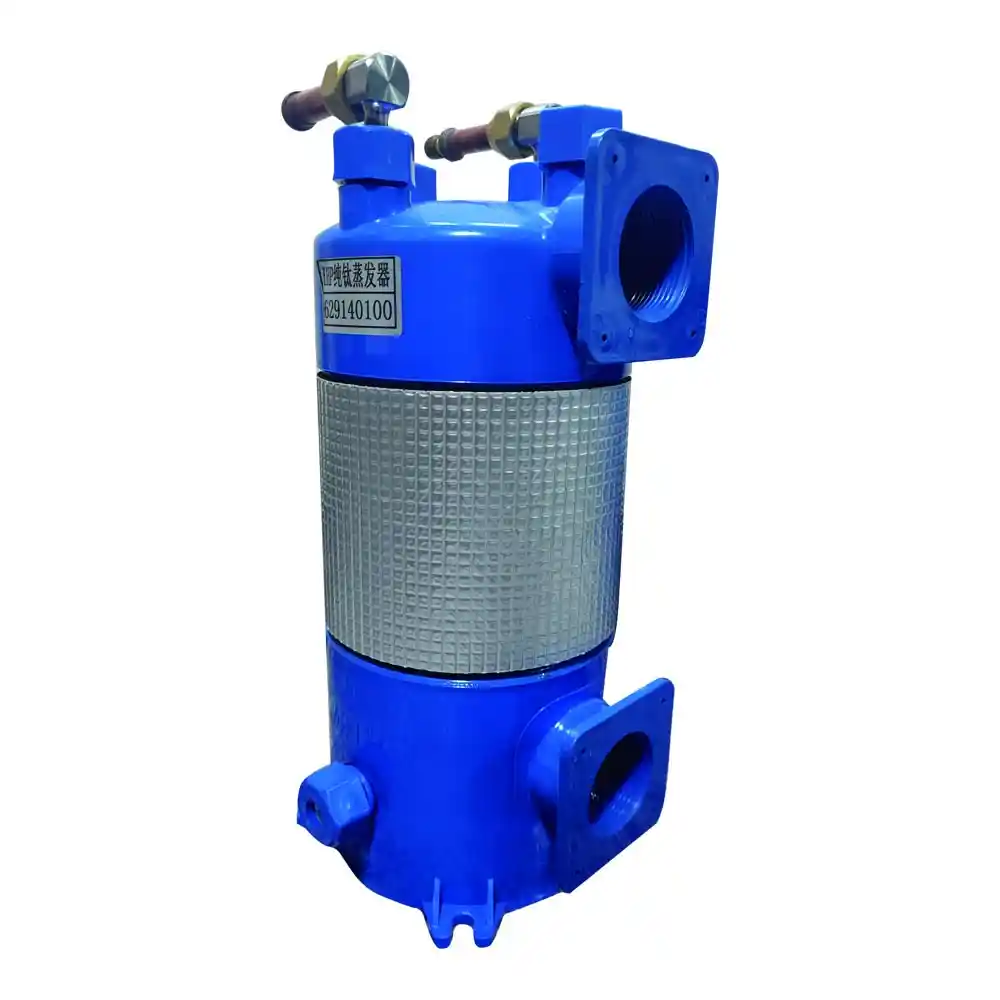1. Introduction
Tube-to-tube connectors play a critical role in the construction and functionality of titanium coil heat exchangers. These connectors provide a secure and efficient means of joining the individual tubes within the heat exchanger, allowing for the transfer of heat between the primary and secondary fluid circuits. This article aims to delve into the significance of tube-to-tube connectors in titanium coil heat exchangers, their impact on performance and durability, and provide a comprehensive analysis of different connector types and materials. We will explore design considerations, advantages of various connector materials, and present comparative data to aid in understanding their characteristics and suitability for specific applications.
2. Understanding Tube-to-Tube Connectors in Titanium Coil Heat Exchangers
Tube-to-tube connectors in titanium coil heat exchangers offer several key advantages:
- Secure Connection: Tube-to-tube connectors ensure a reliable and leak-free connection between individual tubes, enhancing the overall efficiency of heat transfer.
- Flexibility and Adaptability: These connectors allow for the flexibility and adaptability of the heat exchanger design, accommodating various configurations and installation requirements.
- Corrosion Resistance: Titanium, as the primary material for coil heat exchangers, offers exceptional corrosion resistance, ensuring long-term durability and optimal performance.
Now, let’s explore different types of tube-to-tube connectors commonly used in titanium coil heat exchangers and their respective benefits.
2.1 Compression Fittings
Compression fittings provide a reliable and straightforward method of connecting tubes in titanium coil heat exchangers. They offer the following advantages:
- Ease of Installation: Compression fittings are easy to install, requiring minimal tools and equipment.
- Versatility: These fittings can accommodate a wide range of tube sizes and materials, providing flexibility in design and construction.
- High Pressure Resistance: Compression fittings are designed to withstand high pressure, ensuring a secure and leak-free connection.
However, it is essential to consider the limitations of compression fittings, such as the potential for increased pressure drop and the need for regular maintenance to prevent loosening.
2.2 Flared Fittings
Flared fittings are another commonly used option for tube-to-tube connections in titanium coil heat exchangers. They offer the following advantages:
- Enhanced Sealing: Flared fittings provide a tight and reliable seal, minimizing the risk of leakage.
- Ease of Assembly: These fittings are relatively easy to assemble and disassemble, simplifying maintenance and repair tasks.
- Good Pressure Resistance: Flared fittings can withstand moderate to high pressures, ensuring stability and efficiency in heat transfer.
However, it is important to note that flared fittings require careful preparation of the tube ends and may have limitations in applications with extreme temperature variations.
2.3 Push-to-Connect Fittings
Push-to-connect fittings offer a convenient and efficient solution for tube-to-tube connections in titanium coil heat exchangers. They provide the following advantages:
- Quick and Easy Installation: Push-to-connect fittings allow for fast and tool-free installation, saving time and effort during assembly.
- Reliable Sealing: These fittings feature built-in O-rings or seals, ensuring a secure and leak-free connection.
- Versatility: Push-to-connect fittings can accommodate a variety of tube sizes and materials, providing design flexibility.
However, it is essential to consider the limitations of push-to-connect fittings, such as reduced pressure and temperature ratings compared to other connector types.
3. Comparative Analysis of Tube-to-Tube Connectors
Let’s compare the performance of different tube-to-tube connectors commonly used in titanium coil heat exchangers:
| Connector Type | Advantages | Limitations |
|---|---|---|
| Compression Fittings | – Easy installation | – Potential pressure drop |
| – Versatility in tube sizes and materials | – Regular maintenance for tightening |
| – High pressure resistance | ||
|---|---|---|
| Flared Fittings | – Enhanced sealing | – Requires careful tube end preparation |
| – Ease of assembly | – Limitations in extreme temperature |
| – Good pressure resistance | variations | |
|---|---|---|
| Push-to-Connect | – Quick and easy installation | – Reduced pressure and temperature ratings |
| Fittings | – Reliable sealing | |
| – Versatility in tube sizes and materials |
The selection of the appropriate tube-to-tube connector type for a titanium coil heat exchanger depends on various factors, including the specific application requirements, operating conditions, and maintenance considerations.
4. Conclusion
Tube-to-tube connectors in titanium coil heat exchangers play a crucial role in ensuring efficient heat transfer and long-term durability. By understanding the advantages and limitations of different connector types, such as compression fittings, flared fittings, and push-to-connect fittings, engineers and designers can make informed decisions to optimize the performance of heat exchangers. The choice of the connector type should align with the specific requirements of the application, considering factors such as pressure resistance, ease of installation, and long-term reliability. By employing the right tube-to-tube connectors, the efficiency, durability, and overall performance of titanium coil heat exchangers can be significantly enhanced.


